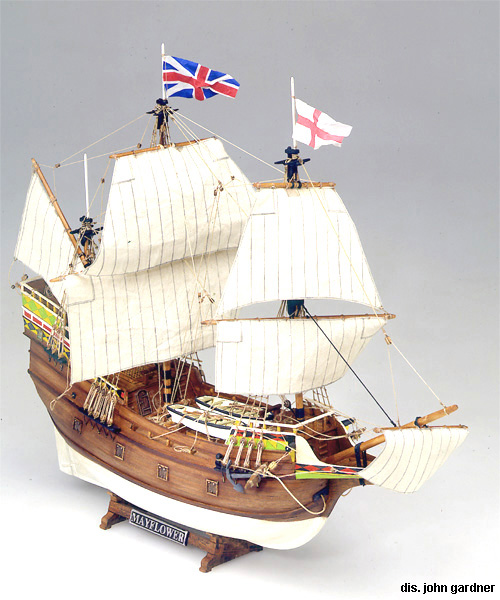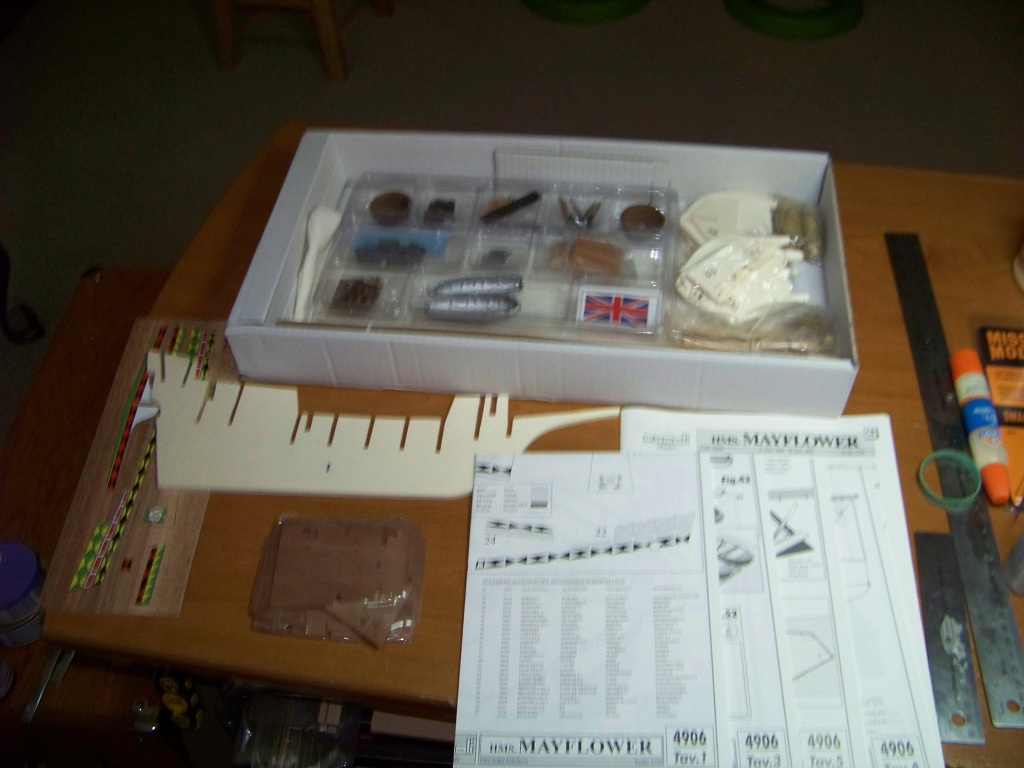Ye Mayflower, Parte the First
Posted By Russ Emerson on March 31, 2011 at 12:19 pm
The next project I’ll be working on here is the Mamoli kit of the Mayflower.

The completed model will be about 20″ long and 16″ tall.
Those who recall the challenge I had on my previous project might well imagine the rapidity with which I have decided to do entirely without the sails. The flags, though historically correct for a ship of that time, would likely not have been flown very often while at sea; I haven’t decided yet whether to include them later.
The kit manufacturer’s description is neither completely accurate nor particularly well translated from the Italian:
During 1609 the Pilgrim Fathers, members of the English separatist church in contrast with the national church caused by their strong religious conviction, they moved in the Low Countries to escape from the threat of the imprisonment. Decided to start up a new religious and civilized community, they chose to emigrate in the New World. On board of the Mayflower, minor galleon of three mast displacing 180 tons, in the 1620 they joined the coasts of Virginia where they ratified with the “Mayflower Contact” the constitution of a real state, the first nucleus of the United States of America.
This leads to one of my first critiques about kit production: it ought to be trivially easy for kit makers, many of which seem for no particular reason to be Italian, to get the manuals and other documentation translated properly into English, and yet none of the non-US or non-UK kits I’ve looked at seems to have done more than let Giuseppe or Vincenzo or whoever crack open an Italian-English dictionary and do word substitution without the slightest notion of what the result would mean.
“Sticks the handrail obtained from listel type G to the up side of the strips.” What?
I have to think that the translations into French, German, and other languages are no better.
It’s always a good idea to inventory the contents of a kit. It looks like everything is there.
After careful study of the plans and the instructions, as well as a bit of contemplation of the meaning of the odd translations, I began at the beginning of the manual, with the profoundly un-photo-worthy tasks of drilling the rudder for the tiller, notching the aft-most bulkhead to accommodate the theoretical movement of the tiller, the shaping of two stern timbers, and assembly of the stand on which the completed model will sit.
Next up, I’ll be diving headlong into hull construction.

Comments